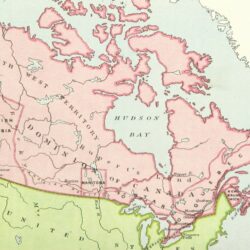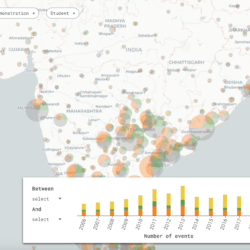What Does Research Say About Race, Diversity, Acceptance, and Hate?

In this free collection of content from SAGE Publishing, research from a variety of scholarly schools of thought – urban studies, sociology scholarship, education research, criminology and journalism – is offered to provide context in the wake of pivotal events, such as the deadly protests in Charlottesville, Virginia, that highlight the societal fault lines in the U.S. and across the globe. The collection includes 12 articles, two special issues, two in-depth reports, and two videos which we made freely available to the public for the next 30 days in the spirit of contributing to informed discussion that we hope will help bring clarity in an incredibly complex and confusing environment — and ultimately suggest ways to help reduce racism, bigotry and hate.
A quote from Nelson Mandela in A Long Walk to Freedom, recently brought back to public the public eye through some wildly popular tweets of former President Obama
Please note that while based on research, analysis, and expertise, the content presents diverse viewpoints and unique interpretations about extremely sensitive issues. We hope that it is received in the same spirit of openness and collaboration in which it is presented.
Scholarly Articles
“Affirming Race, Diversity, and Equity Through Black and Latinx Students’ Lived Experiences,” by Rican Vue, Siduri Jayaram Haslerig, Walter R. Allen | American Educational Research Journal, first published May 24, 2017
Immediately after President Obama’s successful campaign, many hypothesized that the United States had entered a post-racial era. This study uses critical race theory to examine how high-achieving Black and Latinx college students make meaning of and navigate affirmative action policy discourses in an era of colorblind racial politics. Semi-structured interviews with 46 alumni of two race-conscious college access programs illustrate how participants employ a race-conscious framework that affirms the reality of race-conscious policies. Their discourse addressing race, intersectionality, and equity disrupts colorblind ideology. Connecting our analysis to the current social landscape, we argue intersectionality offers a framework for engaging politics of accountability. In the conclusion, we conceptually distinguish between post-racial era conditions and post-race (or post-racist) aspirations.
***
“From “Different” to “Similar”: An Experimental Approach to Understanding Assimilation,” by Ariela Schachter | American Sociological Review, first published September 2, 2016
Assimilation is theorized as a multi-stage process where the structural mobility of immigrants and their descendants ultimately leads to established and immigrant-origin populations developing a subjective sense of social similarity with one another, an outcome I term symbolic belonging. Yet existing work offers little systematic evidence as to whether and how immigrants’ gains—in terms of language ability, socioeconomic status, neighborhood integration, or intermarriage—cause changes in the perceptions of the native-born U.S. population. I use a nationally representative conjoint survey experiment to explore whether and how immigrants’ mobility gains shape native-born white citizens’ perceptions of symbolic belonging. I find that white natives are generally open to structural relationships with immigrant-origin individuals (e.g., friends and neighbors), with the exception of black immigrants and natives, and undocumented immigrants. Yet, white Americans simultaneously view all non-white people, regardless of legal status, as dissimilar and far from achieving symbolic belonging in U.S. society. The results offer optimism about the potential structural mobility of legal immigrants and their descendants, yet simultaneously suggest that explicitly racialized lines of division remain just below the surface.
***
“The Challenge of Diverse Public Schools,” by Toby L. Parcel, Joshua A. Hendrix, Andrew J. Taylor | Contexts, first published March 21, 2016
Decades of successful integration efforts are at stake when one school district fights over school proximity and school “balancing.”
***
Special Issue: “Race and class: the colour of struggle, 1950s–1980s” | Race & Class, first published July-September 2016
From the editor, Jenny Bourne: “This issue … is an attempt to … let new voices and non-dominant interpretations be heard. On the one hand, it allows some of the hitherto unsung heroes of Black Britain to tell their stories and weave, through their life experiences (as mothers, workers, students, exiles), an understanding of the fights and campaigns against racism – which can be seen here as simple struggles just to exist and bring up children in hostile workplace and home conditions. On the other, it suggests that a simple culturalist view of history obscures the way in which the anti-racist struggle, founded as it was in a common experience of colonialism and racism (albeit variegated) and infused by Marxism (also variegated) brought together Africans, Asians and West Indians on political issues and made Black the colour of their common fight, in as much as cultural differences made for different struggles.”
Special Issue: “Reparative histories: radical narratives of ‘race’ and resistance” | Race & Class, first published January–March 2016
Abstract from an article from the guest editors, Cathy Bergin and Anita Rupprecht: This article argues that the complex interactions of history, race, agency, memory and trauma are both essential to and negated by contemporary dominant understandings of racism in the US and Europe. The lethal racist policing of black communities in the US and the fanatical policing of national borders by the EU are richly and disturbingly redolent of the violent raced labour practices which have authorised capitalist modernity. Focusing on cultural representations such as The Wire and the United Nations’ slavery memorial, ‘The Ark of Return’, the authors argue that the history of radical black agency is consistently marginalised in a very particular language of ‘recovery’ and ‘healing’. The acknowledgement of historical crimes is mobilised in such a way as to neutralise the past and to negate the connections between that past and present structures which continue to exploit and vilify racialised subjects within the terms of neoliberal globalisation.
***
“The Sum of Its Parts: The Importance of Deconstructing Truth Commissions,” by Susan M. Glisson | Race and Justice, first published February 26, 2015
Over 30 countries have created truth commissions to investigate human rights abuses and to make recommendations about addressing those abuses. Most of them have been in countries transitioning from authoritarian governments to democracies. Only one truth commission has been successfully implemented in the United States, in Greensboro, North Carolina, and it faced great hurdles. This article will address attempts to create a truth and reconciliation commission in the state of Mississippi and the lessons learned for establishing a truth commission within a democratic context. It will argue that, for the particular historical context of the United States, truth commissions must be deconstructed to their component parts and implemented as simultaneous tools in a truth process tool kit. In short, I argue that truth processes must be defined for each country’s sociopolitical context and may include “rituals of atonement,” changing the geography of memory with historical tours and markers, the creation and implementation of school curriculum and community development, changing the narratives of communities known for violence, and creating partnerships of advocacy and policy groups to seek new institutional reforms that undo the structures of oppression and replace them with equitable ones.
“The Transmission of Historical Racial Violence: Lynching, Civil Rights–Era Terror, and Contemporary Interracial Homicide,” by Nick Petersen, Geoff Ward | Race and Justice, first published January 29, 2015
Research finds that historic racial violence helps predict spatial distributions of contemporary outcomes, including homicide. These findings underscore the continued need to historicize modern race relations, yet intervening processes linking past violence with present events remain unclear. This study examines these intermediary mechanisms by reducing the century-long time-lapse common to legacy of racial violence research. We use mid-century measures of violent opposition to the Civil Rights Movement to bridge the historical gap between lynchings and later homicide, thus clarifying the dynamic and contingent nature of the legacy of racial violence. Structural equation models indicate that incidents of anti-civil rights enforcement and contemporary homicides are more likely to occur in areas with pronounced histories of lynching. Civil rights era assaults mediate the relationship between lynchings and contemporary homicide generally, but not White-on-Black homicide, signaling a need for further research documenting events of mid-century racial violence and clarifying these and other sources of historical transmission. Implications for future research and public policy are considered.
***
“The Problem of the Color Lines in Twenty-first-century Sociology of Education: Researching and Theorizing Demographic Change, Segregation, and School Outcomes,” by Roslyn Arlin Mickelson | Social Currents, first published May 15, 2014
Sociology in general, and the sociology of education area in particular, must get a better grasp on the fact that the demographics of race, ethnicity, and social class are far more complex than the black–white or brown–white binaries of the recent past. In this article, I consider several manifestations of the emergent contemporary color lines that require innovative research designs, qualitative as well as quantitative data collection, and vigorous policy analyses by sociologists of education. The color line, how we think about it, and how we take it into account in our analyses are all pertinent and pressing issues especially as we consider the changing demographics of the student population; the definitional fluidity of core concepts like minority, diversity, and segregation; the current resegregation of public education by race, ethnic, linguistic status, and family income; and the relationship of the latter to educational outcomes across the life course.
“White Colorism,” by Lance Hannon | Social Currents, first published February 5, 2015
Perhaps reflecting a desire to emphasize the enduring power of rigidly constructed racial categories, sociology has tended to downplay the importance of within-category variation in skin tone. Similarly, in popular media, “colorism,” or discrimination based on skin lightness, is rarely mentioned. When colorism is discussed, it is almost exclusively framed in terms of intraracial “black-on-black” discrimination. In line with arguments highlighting the centrality of white racism, the present paper contends that it is important for researchers to give unique attention to white colorism. Using data from the 2012 American National Election Study, an example is presented on white interviewers’ perceptions of minority respondent skin tone and intelligence (N = 223). Results from ordinal logistic regression analyses indicate that African American and Latino respondents with the lightest skin are several times more likely to be seen by whites as intelligent compared with those with the darkest skin. The article concludes that a full accounting of white hegemony requires an acknowledgment of both white racism and white colorism.
***
“Interrogating Ourselves in a Racialized World: Using Personal Experience to Improve Students’ Understanding of Racism,” by Kendra Jason, Sarah Nell Epplen | Sociology of Race and Ethnicity, first published July 25, 2016
In this article we suggest strategies for teachers who do not teach race and ethnicity courses on how to create learning opportunities for students to analyze their social environments and interrogate how their beliefs, feelings, and actions concerning race and racism are shaped by their social worlds. We propose a pedagogical approach that examines and welcomes students’ personal experiences in the classroom as one of the most powerful tools for promoting deep learning about race relations and the damaging subtleties of racism. We argue that having students analyze the social origins of their thoughts by personalizing their assignments helps students identify the source of internalized colorblind ideologies. We contend that only when students are pushed to acknowledge the social sources of their “individual” perspectives will they be equipped to examine society through racialized lenses.
“Racial and Ethnic Differences in Perceptions of Everyday Discrimination,” by Fang Gong, Jun Xu, David T. Takeuchi | Sociology of Race and Ethnicity, first published December 27, 2016
This study examines differences in perceptions of discrimination across multiple racial and ethnic minority groups. We focus on structural factors such as race/ethnicity and socioeconomic status (SES) and psychosocial factors such as racial/ethnic identities as predictors of perceived everyday discrimination. Data come from the Collaborative Psychiatric Epidemiology Surveys (CPES), and analyses reveal several important patterns. First, perceived everyday discrimination is highly prevalent among racial/ethnic minorities in the United States and these perceptions largely reflect existing racial/ethnic hierarchies: African Americans and Afro-Caribbeans report the highest level of discrimination, whereas most Asian and Latino groups report less. Second, education, income, and immigration-related factors such as duration of residence and English language proficiency are positively associated with perceived discrimination. Third, the effects of racial/ethnic identity on perceived discrimination vary across ethnic groups, showing stronger associations among Afro-Caribbeans than among other racial and ethnic minorities. Findings from this study help to advance our theoretical understanding and empirical knowledge of racial/ethnic stratification and perceived discrimination in the United States.
“Theorizing Ethnic and Racial Movements in the Global Age: Lessons from the Civil Rights Movement,” by Crystal M. Fleming, Aldon Morris | Sociology of Race and Ethnicity, first published January 1, 2015
In this essay, we reflect on the history and legacies of the U.S. Civil Rights Movement and suggest avenues of future research of interest to scholars of ethnic and racial movements. First, we unpack how the Civil Rights Movement developed as a major movement utilizing both international and domestic influences. Second, we consider the central role of technology—including television and internet communication technologies —in shaping contemporary ethnic and racial activism. In so doing, we aim to enhance scholarship on movements and efforts by those committed to challenging racial and ethnic disparities. Finally, we explore how the collective memories of past racial and ethnic struggles, including the Civil Rights Movement, are constructed. We argue that activists and their opposition have stakes in how past ethnoracial oppression and movements alike will be remembered and interpreted. Such memories and interpretations can serve as the basis for additional demands that activists make on power holders and influence actions of the powerful to resist such demands.
***
“Affirmative action, diversity, and racial justice: Reflections from a diverse, non-elite university.” by Lawrence Blum | Theory and Research in Education, first published January 8, 2017
In this article, I argue (1) affirmative action diverts attention from more urgent needs of racial justice in education – better quality K-12 education, and better quality and more accessible public higher education; (2) the increasing wealth of students at affirmative action institutions is a sign of diminished quality of those students compared to those at less selective institutions, who are comparatively disproportionately black and Latino; and (3) aligning the standard rankings of colleges with the quality of student (and quality of instruction at the different kinds of institution) would benefit black and Latino students as a group much more than affirmative action does.
***
“No-Majority Communities: Racial Diversity and Change at the Local Level,” by Chad R. Farrell, Barrett A. Lee | Urban Affairs Review, first published December 26, 2016
The United States is experiencing a profound increase in racial and ethnic diversity, although its communities are experiencing the trend differently depending on their size and location. Using census data from 1980 to 2010, we focus on a subset of highly diverse local jurisdictions in which no ethnoracial group makes up more than half of the population. We track the prevalence, emergence, and characteristics of these no-majority places, finding that they are rapidly increasing in number and are home to substantial and growing shares of the black, Latino, and Asian populations. Transitions in no-majority places varied considerably over time. Older cohorts of places that became no-majority decades ago moved toward Latino or black majorities, whereas those in recent cohorts tended to persist as no-majority places. Most of these communities continued to diversify in the decades after first becoming no-majority and remain quite diverse today. However, the shift toward no-majority status was often accompanied by large white population declines.
Special Reports
Throughout 2015 and 2016, calls for policy reform that would protect against racism – even institutional racism – arguably became more prevalent than they had been in decades. A January, 2016 CQ Researcher report details the social issues that gave rise to this environment, and that led to many of the challenges that we face just a year and a half later.
Racial Conflict – January, 2016
 Race-centered conflicts in several U.S. cities have led to the strongest calls for policy reforms since the turbulent civil rights era of the 1960s. Propelled largely by videos of violent police confrontations with African-Americans, protesters have taken to the streets in Chicago, New York and other cities demanding changes in police tactics. Meanwhile, students — black and white — at several major universities have pressured school presidents to deal aggressively with racist incidents on campus. And activists in the emerging Black Lives Matter movement are charging that “institutional racism” persists in public institutions and laws a half century after legally sanctioned discrimination was banned. Critics of that view argue that moral failings in the black community — and not institutional racism — explain why many African-Americans lack parity with whites in such areas as wealth, employment, housing and educational attainment. But those who cite institutional racism say enormous socioeconomic gaps and entrenched housing and school segregation patterns stem from societal decisions that far outweigh individuals’ life choices.
Race-centered conflicts in several U.S. cities have led to the strongest calls for policy reforms since the turbulent civil rights era of the 1960s. Propelled largely by videos of violent police confrontations with African-Americans, protesters have taken to the streets in Chicago, New York and other cities demanding changes in police tactics. Meanwhile, students — black and white — at several major universities have pressured school presidents to deal aggressively with racist incidents on campus. And activists in the emerging Black Lives Matter movement are charging that “institutional racism” persists in public institutions and laws a half century after legally sanctioned discrimination was banned. Critics of that view argue that moral failings in the black community — and not institutional racism — explain why many African-Americans lack parity with whites in such areas as wealth, employment, housing and educational attainment. But those who cite institutional racism say enormous socioeconomic gaps and entrenched housing and school segregation patterns stem from societal decisions that far outweigh individuals’ life choices.
Though its use has recently been debated, the term “Alt-Right” has grown considerably over the last few years. But what do people really mean when they use the term? A 2017 CQ Researcher report uses trusted sources to explain the use of the term and tracks its growth as well as the evolution of its predecessors. It also presents related debates such as whether online racist speech should be regulated or whether that does more harm than good.
‘Alt-Right’ Movement – March, 2017
The “alt-right” … is urging white Americans to band together and fight multiculturalism. The movement has gained more attention than any fringe group in decades because of its role in the 2016 election and its embrace of President Trump’s America First agenda. Political observers say the alt-right has tapped into some whites’ fears about immigration and the nation’s changing demographics, where whites will soon be a minority. The alt-right remains small, but both conservatives and liberals denounce its beliefs as racist. They point with alarm to the alt-right’s online use of profane language and images to attack social conventions — moves that are helping it gain followers. The movement’s use of identity politics, some say, is reminiscent of how liberals used it to fight for racial and gender equality. A number of analysts note that hate crimes have been increasing since the November election and urge Trump to more forcefully speak out against them.
Video Content
What leads to the hateful actions that spur bigotry and violence on the basis of race and ethnicity? What motivates hate crime offenders and what circumstances in their lives push them to join and leave hate groups? Two videos from SAGE Video’s Criminology Collection answer these question, explaining that fear is often at the root of hateful acts and thrill-seeking and defensiveness are some of the most common motivating factors.
The Anatomy of Hate: When fear takes over, a person’s value system can be completely uprooted. Hate arises from fear, and in order to survive, some try to establish themselves as dominant. This documentary examines different groups that are walking the line between fear and hate, such as the Westboro Baptist church, Palestinian and Israeli soldiers, and white supremacist groups.
Hate Crime Offenders: Professor Phyllis Gerstenfeld explains that most hate crime offenders are not actually members of hate groups. She discusses the motivating factors behind most hate crime, and she describes different kinds of hate groups in the United States.

































































































